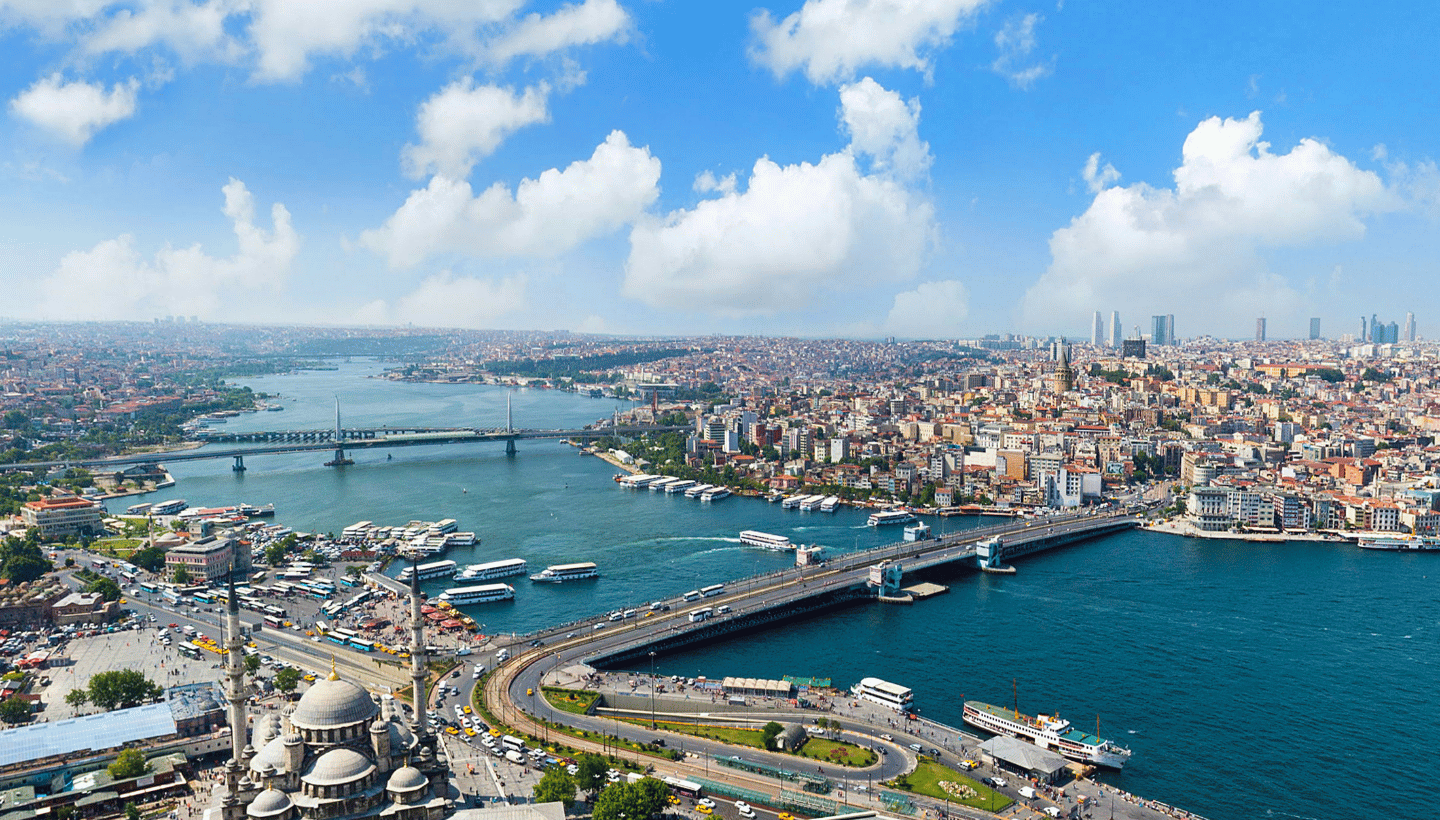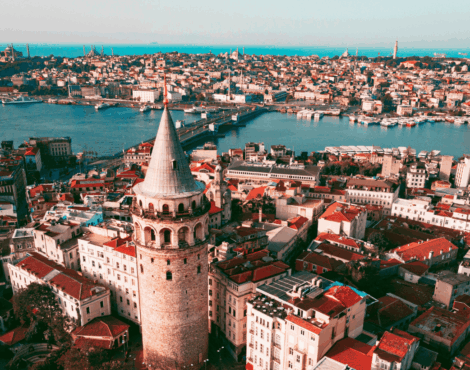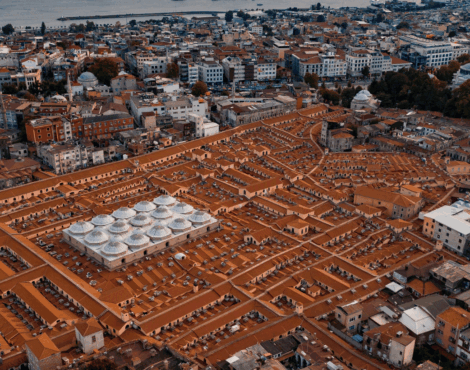Few cities in the world can rival Istanbul’s depth, beauty, and historical significance. Spanning two continents and countless centuries, this magnificent city has been the capital of three great empires — Roman, Byzantine, and Ottoman — and continues to serve as the cultural and spiritual heart of modern Turkey.
Istanbul is more than a destination; it is a living chronicle of human civilization. Every stone, every dome, and every street whispers stories of emperors, sultans, artists, and dreamers who shaped its destiny.
From the shimmering waters of the Bosphorus to the ancient walls of Constantinople, the city stands as a bridge between worlds — East and West, past and present. Its skyline is crowned with domes and minarets, where the call to prayer echoes alongside the hum of daily life. The aroma of Turkish coffee drifts through alleys that once hosted Roman traders and Ottoman poets.
Travelers who stay in the Historical Peninsula, near Laleli and Sultanahmet, find themselves surrounded by history. It’s a place where the echoes of the Byzantine Empire still linger beneath the grandeur of Ottoman mosques, and where the foundations of the Turkish Republic were laid in the 20th century. For visitors staying at Dalan Hotel, the story of Istanbul unfolds just beyond the doorstep — in its monuments, its people, and its timeless spirit.
Let’s journey through the ages and discover how this extraordinary city evolved — from the ancient Roman era to the modern Turkish Republic.
The Roman and Byzantine Era: The Rise of Constantinople
Istanbul’s story begins long before it was known by its current name. Founded as Byzantion around the 7th century BC by Greek settlers from Megara, the small colony grew steadily due to its strategic location — a natural harbor linking the Black Sea and the Mediterranean.
However, it was Emperor Constantine the Great who recognized the city’s true potential. In 330 AD, he reestablished it as the capital of the Roman Empire under the name Constantinople.
This decision transformed the city into one of the greatest metropolises of the ancient world. Surrounded by mighty defensive walls and adorned with monumental architecture, Constantinople became the heart of politics, religion, and commerce for centuries.
During the Byzantine Empire, the city flourished as a bastion of Christianity and art. The most iconic structure of this period, Hagia Sophia, was completed in 537 AD under Emperor Justinian I. Its massive dome and golden mosaics remain among humanity’s greatest architectural achievements.
Other landmarks, such as the Hippodrome, Theodosian Walls, and the Great Palace, defined the Byzantine capital as both a center of power and a symbol of divine grandeur.
For nearly a thousand years, Constantinople stood as the envy of the world — until a young Ottoman sultan changed its fate forever.
The Ottoman Empire: From Conquest to Cultural Glory
In 1453, Sultan Mehmed II (Mehmed the Conqueror) captured Constantinople after a 53-day siege, marking the end of the Byzantine Empire and the dawn of a new era. The city became the jewel of the Ottoman Empire and was renamed Istanbul, evolving into one of the most vibrant capitals of the Islamic world.
Under Ottoman rule, Istanbul flourished like never before. The skyline filled with magnificent mosques, grand palaces, and bustling bazaars. The Topkapı Palace became the seat of the sultans, while the Süleymaniye Mosque — designed by the legendary architect Mimar Sinan — became an enduring masterpiece of Ottoman architecture.
The Ottomans turned Istanbul into a global center of art, science, and trade. Caravans from Persia, ships from Venice, and scholars from across the empire converged here.
The Grand Bazaar, established in the 15th century, became one of the world’s oldest and largest covered markets — a symbol of Istanbul’s commercial vitality that still thrives today.
Beyond its material wealth, the city’s multicultural identity defined its spirit. Muslims, Christians, and Jews lived side by side, creating a cosmopolitan atmosphere that enriched Istanbul’s traditions, cuisine, and architecture.
For nearly five centuries, Istanbul served as the beating heart of an empire that stretched across three continents — until the winds of modernity began to reshape it once again.
The Republic of Turkey: A Modern City with an Ancient Soul
After the fall of the Ottoman Empire following World War I, the Republic of Turkey was founded in 1923 under the leadership of Mustafa Kemal Atatürk. The new capital was moved to Ankara, but Istanbul remained the cultural, financial, and emotional core of the nation.
During the early Republican period, Istanbul underwent significant transformation. Western-style education, art, and architecture began to shape the city’s new identity. The introduction of modern infrastructure — bridges, trams, universities, and cultural institutions — connected Istanbul’s glorious past with its vibrant future.
The Bosphorus Bridge, completed in 1973, symbolized this connection both literally and metaphorically — linking Europe and Asia, history and modernity.
Today, Istanbul is a megacity where ancient mosques stand beside skyscrapers, and centuries-old markets coexist with contemporary art galleries.
For visitors exploring the Old City, this duality is everywhere: in the shadow of Hagia Sophia, on the ferry rides between continents, and in the peaceful courtyards that have witnessed empires rise and fall.
Istanbul Today: Living History at Every Corner
Modern Istanbul continues to captivate travelers with its endless contrasts — old and new, sacred and worldly, serene and bustling. Wandering through the streets of Laleli, Sultanahmet, or Beyazıt, one can trace the layers of time in the stones beneath their feet.
Staying at Dalan Hotel offers guests the chance to experience this living history firsthand. Just steps away lie centuries of heritage — from Byzantine basilicas to Ottoman mosques, from Roman columns to Turkish baths. Yet within the hotel’s calm and clean atmosphere, guests find a serene refuge after a day of exploring this ever-evolving city.
In Istanbul, history isn’t locked behind museum walls; it breathes through the rhythm of daily life. Every sunrise over the Bosphorus is a reminder that this city — once Byzantion, then Constantinople, now Istanbul — continues to shape the world, as it has for over two millennia.





